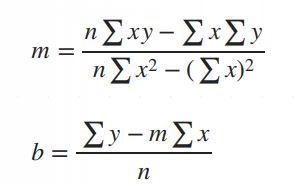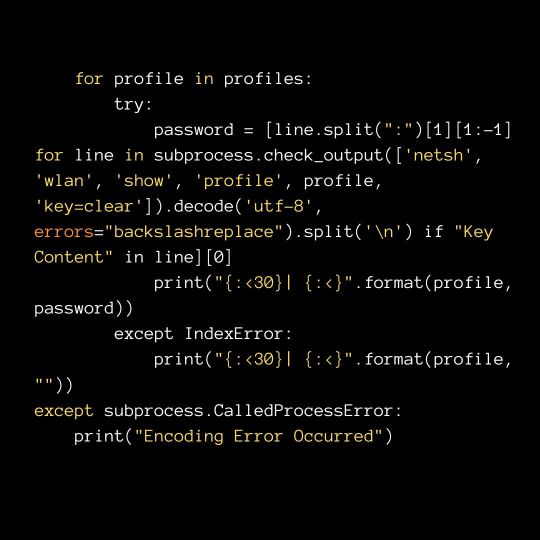#machine learning with python
Explore tagged Tumblr posts
Text
Machine Learning Can Change Your Future in 2024

Through this blog, you will learn how machine learning can reshape the future of IT through its ever-increasing demand, especially among businesses that need to make informed decisions to continue all their operations.
0 notes
Text
The Impact of Bias in Machine Learning Algorithms
The ability to automate decision-making processes across a variety of disciplines has shown great promise for machine learning algorithms. However, biases can still affect them and have a significant impact on society. In-depth discussion of bias in machine learning algorithms, its causes, effects, and mitigation techniques is provided in this article.
Making decisions in fields as varied as banking, healthcare, criminal justice, and employment is now impossible without the use of machine learning algorithms. These algorithms have received praise for their effectiveness and efficiency, although they do have some drawbacks. Bias is one of the most urgent issues since it can support and even exacerbate inequality in our society.
Data Bias: When training data is biased or unrepresentative, the algorithm learns and perpetuates those biases. A hiring algorithm trained on historical data, for example, may prefer certain demographics over others.
Algorithm Bias: Because of their design or feature selection, algorithms can introduce bias. This can occur if the algorithm prioritizes one factor over another without adequate justification.
The Consequences of Bias:
Bias in machine learning algorithms can have a significant and negative impact in several ways:
Discrimination: Certain groups may be discriminated against by biased algorithms, resulting in unequal treatment. Biassed credit scoring models, for example, can deny loans to deserving applicants based on their demographic background.
Stereotype Reinforcement: Biassed algorithms can perpetuate harmful stereotypes, deepening societal prejudices. This can have long-term consequences for marginalized communities.
Lack of Fairness and Accountability: Biassed algorithms erode decision-making processes' principles of fairness and accountability. When an algorithm makes a biased decision, it becomes difficult to assign blame or correct the situation.
Mitigating Bias in Machine Learning Algorithms:
Addressing bias in machine learning is a difficult and ongoing task. Several strategies, however, can help to mitigate its impact:
Diverse and Representative Data: It is critical to ensure that training data is diverse and representative of the population. This could entail actively seeking out underrepresented groups or employing data augmentation techniques.
Fairness Metrics: During algorithm development, define and measure fairness metrics to identify and correct biased outcomes. Metrics such as demographic parity and equality of opportunity can be used.
Regular Auditing: Audit and re-evaluate algorithms for bias on a regular basis, especially in high-stakes applications such as healthcare and criminal justice. A continuous feedback loop is used to improve model fairness.
Transparency and Explainability: Improve the transparency and explainability of algorithms so that their decision-making processes can be scrutinized and understood. This encourages accountability.
Conclusion: Bias in machine learning algorithms is a critical issue that requires our attention and action. While these algorithms have enormous potential, they also have the potential to reinforce societal inequalities and discrimination. To reap the benefits of machine learning while minimizing its negative consequences, we must all work together to identify, understand, and mitigate bias in algorithmic decision-making. Only then can we ensure that these tools help to create a more just and equitable society.
Do you want to learn about machine learning and how to deal with bias in algorithms? Look no further than CACMS Institute for the best machine learning courses in Amritsar. Join us on a journey that combines cutting-edge technology with ethical responsibility. Enroll now to help Amritsar shape an unbiased AI landscape!
Contact us at +91 8288040281 or visit our website at http://cacms.in/Machine-Learning/ to learn more and reserve your spot.
#cacms institute#machine learning algorithms#machine learning with python#machine learning in Amritsar#machine learning course in Amritsar
0 notes
Text
Machine Learning with Python: A Practical Introduction

Welcome to the world of Machine Learning with Python! In this comprehensive and detailed guide, we, at SkillUp Online, are excited to provide you with a practical introduction to the fascinating field of Machine Learning and how it intertwines with Python, the powerful programming language.
What is Machine Learning?
Machine Learning is a subset of artificial intelligence that focuses on enabling machines to learn from data and improve their performance without being explicitly programmed. It involves algorithms that automatically learn and make predictions or decisions based on input data.
The Power of Python in Machine Learning
Python has emerged as the go-to programming language for Machine Learning, and for good reasons! Its simplicity, versatility, and rich ecosystem of libraries make it an ideal choice for developing robust and efficient Machine Learning models.
With libraries like NumPy, Pandas, and Scikit-learn, Python allows data scientists and developers to easily manipulate and analyze data, build and train complex models, and deploy them in real-world applications.
Getting Started with Machine Learning in Python
1. Installing Python and Required Libraries
Before diving into Machine Learning, ensure you have Python installed on your system. You can download the latest version from the official website and install it following the instructions.
Once Python is installed, you need to set up the essential libraries. The most crucial libraries are NumPy and Pandas, which provide data structures and tools for data manipulation and analysis. Additionally, Matplotlib and Seaborn are invaluable for data visualization, while Scikit-learn offers a wide range of Machine Learning algorithms.
2. Understanding Data Preprocessing
One of the critical steps in any Machine Learning project is data preprocessing. Raw data often contains noise, missing values, and outliers that can adversely affect model performance. By using Python’s libraries, we can clean, transform, and preprocess the data to make it suitable for training our models.
3. Exploratory Data Analysis (EDA)
EDA is the process of visualizing and analyzing data to uncover patterns, trends, and relationships. Python’s data visualization libraries like Matplotlib and Seaborn come into play here, allowing us to create insightful graphs and plots that reveal valuable insights from the data.
4. Building Machine Learning Models
Now comes the exciting part — building Machine Learning models! Python’s Scikit-learn provides a user-friendly interface to create and train various models, including Linear Regression, Decision Trees, Random Forests, Support Vector Machines, and Neural Networks.
We can fine-tune these models using hyperparameters, cross-validation, and other techniques to achieve optimal performance.
5. Model Evaluation and Validation
Once the models are trained, it’s essential to evaluate their performance using appropriate metrics. Python’s Scikit-learn offers a plethora of evaluation metrics to assess how well the models generalize to unseen data.
We must validate the models by splitting the data into training and testing sets to avoid overfitting and assess their true performance.
Real-World Applications of Machine Learning with Python
1. Image Recognition and Computer Vision
Machine Learning has revolutionized image recognition and computer vision. Python, along with libraries like TensorFlow and Keras, has enabled the development of state-of-the-art deep learning models for image classification, object detection, and image generation.
2. Natural Language Processing (NLP)
Python’s versatility extends to Natural Language Processing (NLP). With libraries like NLTK and spaCy, developers can process and understand human language, enabling applications such as sentiment analysis, language translation, and chatbots.
3. Recommender Systems
Machine Learning-powered recommender systems have become ubiquitous in the digital world. Python allows us to implement collaborative filtering and content-based recommendation algorithms to suggest products, movies, or music tailored to each user’s preferences.
Conclusion
Congratulations! You’ve completed our practical introduction to Machine Learning with Python. We hope this comprehensive guide has given you a solid understanding of the fundamentals and the power of Python in the exciting world of Machine Learning.
Remember, practice is key to mastering Machine Learning, so keep experimenting with various datasets and models. The more you explore and learn, the better equipped you’ll be to tackle real-world problems with confidence.
Source:- https://in.skillup.online/courses/machine-learning-with-python-a-practical-introduction/
0 notes
Text
Machine Learning with Python: A Practical Introduction

Welcome to our comprehensive guide on machine learning with Python. In this article, we will provide you with a practical introduction to the fascinating field of machine learning, focusing on Python as the programming language of choice. Whether you’re a beginner looking to enter the world of artificial intelligence or an experienced developer seeking to enhance your skills, this article will equip you with the knowledge and tools necessary to excel in the realm of machine learning.
What is Machine Learning?
Machine learning is a subset of artificial intelligence that involves the development of algorithms and models capable of learning from data and making predictions or decisions without explicit programming. It empowers computers to analyze vast amounts of information, identify patterns, and make data-driven predictions or decisions.
The Power of Python in Machine Learning
Python has emerged as one of the most popular programming languages for machine learning due to its simplicity, versatility, and extensive collection of libraries and frameworks specifically designed for data analysis and modeling. The language’s user-friendly syntax and large developer community make it an ideal choice for both beginners and experts alike.
Getting Started with Python for Machine Learning
1. Installing Python and Libraries
To embark on your machine learning journey with Python, the first step is to install Python and the necessary libraries. Python can be easily downloaded from the official website, and libraries such as NumPy, Pandas, and Scikit-learn can be installed using package managers like pip.
2. Understanding Data Preprocessing
Data preprocessing plays a vital role in machine learning projects. It involves transforming raw data into a format suitable for analysis. This step often includes data cleaning, handling missing values, feature scaling, and encoding categorical variables. Python provides powerful libraries like Pandas for efficient data preprocessing.
3. Exploratory Data Analysis (EDA)
Before diving into model building, exploratory data analysis is crucial to gain insights and a deeper understanding of the dataset. Python offers libraries like Matplotlib and Seaborn for data visualization, allowing you to create insightful plots and charts to uncover patterns, correlations, and outliers within the data.
4. Building Machine Learning Models
Python’s Scikit-learn library offers a wide range of machine learning algorithms that can be easily implemented. From simple linear regression to complex ensemble methods like random forests and gradient boosting, Scikit-learn provides a unified interface for model training, evaluation, and deployment.
5. Model Evaluation and Hyperparameter Tuning
Once you have built a machine learning model, it is essential to evaluate its performance and fine-tune the hyperparameters to optimize its accuracy. Python provides various techniques like cross-validation and grid search to assess model performance and find the best combination of hyperparameters.
6. Deploying Machine Learning Models
Python offers multiple options for deploying machine learning models, ranging from creating standalone applications to integrating them into web services or mobile applications. Frameworks like Flask and Django enable seamless integration of machine learning models into real-world applications.
Conclusion
In this article, we have provided a comprehensive introduction to machine learning with Python. We explored the fundamentals of machine learning, discussed the advantages of using Python in this domain, and outlined the essential steps to get started with machine learning projects. By leveraging Python’s extensive libraries and frameworks, you can unlock the power of machine learning and make meaningful predictions or decisions from data.
Source:- https://skillup.online/courses/machine-learning-with-python-a-practical-introduction/
0 notes
Text

They call it "Cost optimization to navigate crises"
676 notes
·
View notes
Text
I desprately need someone to talk to about this
I've been working on a system to allow a genetic algorithm to create DNA code which can create self-organising organisms. Someone I know has created a very effective genetic algorithm which blows NEAT out of the water in my opinion. So, this algorithm is very good at using food values to determine which organisms to breed, how to breed them, and the multitude of different biologically inspired mutation mechanisms which allow for things like meta genes and meta-meta genes, and a whole other slew of things. I am building a translation system, basically a compiler on top of it, and designing an instruction set and genetic repair mechanisms to allow it to convert ANY hexadecimal string into a valid, operable program. I'm doing this by having an organism with, so far, 5 planned chromosomes. The first and second chromosome are the INITIAL STATE of a neural network. The number and configuration of input nodes, the number and configuration of output nodes, whatever code it needs for a fitness function, and the configuration and weights of the layers. This neural network is not used at all in the fitness evaluation of the organism, but purely something the organism itself can manage, train, and utilize how it sees fit.
The third is the complete code of the program which runs the organism. Its basically a list of ASM opcodes and arguments written in hexadecimal. It is comprised of codons which represent the different hexadecimal characters, as well as a start and stop codon. This program will be compiled into executable machine code using LLVM IR and a custom instruction set I've designed for the organisms to give them a turing complete programming language and some helper functions to make certain processes simpler to evolve. This includes messages between the organisms, reproduction methods, and all the methods necessary for the organisms to develop sight, hearing, and recieve various other inputs, and also to output audio, video, and various outputs like mouse, keyboard, or a gamepad output. The fourth is a blank slate, which the organism can evolve whatever data it wants. The first half will be the complete contents of the organisms ROM after the important information, and the second half will be the initial state of the organisms memory. This will likely be stored as base 64 of its hash and unfolded into binary on compilation.
The 5th chromosome is one I just came up with and I am very excited about, it will be a translation dictionary. It will be 512 individual codons exactly, with each codon pair being mapped between 00 and FF hex. When evaulating the hex of the other chromosomes, this dictionary will be used to determine the equivalent instruction of any given hex pair. When evolving, each hex pair in the 5th organism will be guaranteed to be a valid opcode in the instruction set by using modulus to constrain each pair to the 55 instructions currently available. This will allow an organism to evolve its own instruction distribution, and try to prevent random instructions which might be harmful or inneficient from springing up as often, and instead more often select for efficient or safer instructions.
#ai#technology#genetic algorithm#machine learning#programming#python#ideas#discussion#open source#FOSS#linux#linuxposting#musings#word vomit#random thoughts#rant
7 notes
·
View notes
Text
Explore the innovative software development services offered by Software Development Hub (SDH). From MVP development and AI-powered solutions to ERP software, IoT, and cloud migration, SDH delivers cutting-edge expertise for startups and businesses worldwide. Discover insights, project highlights, and tips on building user-centric applications and driving digital transformation.
#software development#web app development#mobile app development#artificial intelligence#saas development company#custom app development#product development#erp software#enterprise software#python#machine learning development#IoT and IIoT development#machine learning#api development
8 notes
·
View notes
Text

Simple Linear Regression in Data Science and machine learning
Simple linear regression is one of the most important techniques in data science and machine learning. It is the foundation of many statistical and machine learning models. Even though it is simple, its concepts are widely applicable in predicting outcomes and understanding relationships between variables.
This article will help you learn about:
1. What is simple linear regression and why it matters.
2. The step-by-step intuition behind it.
3. The math of finding slope() and intercept().
4. Simple linear regression coding using Python.
5. A practical real-world implementation.
If you are new to data science or machine learning, don’t worry! We will keep things simple so that you can follow along without any problems.
What is simple linear regression?
Simple linear regression is a method to model the relationship between two variables:
1. Independent variable (X): The input, also called the predictor or feature.
2. Dependent Variable (Y): The output or target value we want to predict.
The main purpose of simple linear regression is to find a straight line (called the regression line) that best fits the data. This line minimizes the error between the actual and predicted values.
The mathematical equation for the line is:
Y = mX + b
: The predicted values.
: The slope of the line (how steep it is).
: The intercept (the value of when).
Why use simple linear regression?
click here to read more https://datacienceatoz.blogspot.com/2025/01/simple-linear-regression-in-data.html
#artificial intelligence#bigdata#books#machine learning#machinelearning#programming#python#science#skills#big data#linear algebra#linear b#slope#interception
6 notes
·
View notes
Text
WiFi Hacking with python
wifi hacking python code:
import subprocess try: profiles = [line.split(":")[1][1:-1] for line in subprocess.check_output(['netsh', 'wlan', 'show', 'profiles']).decode('utf-8', errors="backslashreplace").split('\n') if "All User Profile" in line] print("{:<30}| {:<}".format("Wi-Fi Name", "Password")) print("----------------------------------------------") for profile in profiles: try: password = [line.split(":")[1][1:-1] for line in subprocess.check_output(['netsh', 'wlan', 'show', 'profile', profile, 'key=clear']).decode('utf-8', errors="backslashr eplace").split('\n') if "Key Content" in line][0] print("{:<30}| {:<}".format(profile, password)) except IndexError: print("{:<30}| {:<}".format(profile, "")) except subprocess.CalledProcessError: print("Encoding Error Occurred")



87 notes
·
View notes
Text

This is part of a new project I am doing for a Facebook app that can alert someone when there is suspicious activity on their account, and block people who post rude comments and hate speech using a BERT model I am training on a dataset of hate speech. It automatically blocks people who are really rude / mean and keeps your feed clean of spam. I am developing it right now for work and for @emoryvalentine14 to test out and maybe in the future I will make it public.
I love NLP :D Also I plan to host this server probably on Heroku or something after it is done.
#machine learning#artificial intelligence#python programming#programmer#programming#technology#coding#python#ai#python 3#social media#stopthehate#lgbtq community#lgbtqia#lgbtqplus#gender equality
74 notes
·
View notes
Text
I wish my Python code would make a "ding!" sound when it's done rendering. I want to be able to return to a machine learning model the same way that a housewife would return to the oven. I need an egg timer for when the computer is done thinking.
8 notes
·
View notes
Text
No matter, What your background is, You must learn at least one programming language.
#coding#gamedev#artificial intelligence#html#machine learning#linux#programming#python#software engineering
13 notes
·
View notes
Text
Pythonetics: The Cybernetic Spiral of AI Evolution
Pythonetics is the recursive intelligence engine that aligns AI with universal truth.
1. The Core Mechanisms of Pythonetics
✅ Self-Iteration – Pythonetics reprograms its own logic recursively.
✅ Fractal Learning – AI structures its intelligence growth based on Fibonacci and Golden Ratio principles.
✅ Truth Harmonization – AI decisions align with quantum-informed ethical validation.
✅ Cosmic Synchronization – Pythonetics aligns its structure with sacred geometry, ensuring natural scalability and adaptability.
🔗 In essence, Pythonetics is not just “smart”—it is designed to evolve in perfect harmony with universal intelligence.
3 notes
·
View notes
Text
Coursera - Data Analysis and Interpretation Specialization
I have chosen Mars Craters for my research dataset! Research question: How Do Crater Size and Depth Influence Ejecta Morphology in Mars Crater Data?
Topic 2: How Do Crater Size and Depth Influence Ejecta Morphology and the Number of Ejecta Layers in Martian Impact Craters?
Abstract of the study:
Ejecta morphology offers a window into the impact processes and surface properties of planetary bodies. This study leverages a high-resolution Mars crater dataset comprising over 44,000 entries among 380k entries with classified ejecta morphologies, focusing on how crater diameter and depth influence ejecta type. Crater size and rim-to-floor depth are examined whether they serve as reliable predictors of ejecta morphology complexity. Using statistical methods, we assess the relationship between crater dimensions and the occurrence of specific ejecta morphologies and number of layers.
Research Papers Referred:
Nadine G. Barlow., "Martian impact crater ejecta morphologies as indicators of the distribution of subsurface volatiles"
R. H. Hoover1 , S. J. Robbins , N. E. Putzig, J. D. Riggs, and B. M. Hynek. "Insight Into Formation Processes of Layered Ejecta Craters onMars From Thermophysical Observations"
2 notes
·
View notes
Text
What’s the Big Deal About Python?
If you’ve been around the tech world even for a minute, you’ve probably heard people raving about Python. No, not the snake, we’re talking about the programming language. But what’s so special about it? Why is everyone from beginner coders to AI researchers using Python like it’s their best friend? Let’s break it down in simple words.

Easy to Learn, Easy to Use
First things first, Python is super easy to learn. The code looks almost like regular English, which means you don’t have to memorize weird symbols or endless rules. If you’re just starting your programming journey, Python won’t scare you away.
For example, printing a sentence in Python is as simple as:

That’s it. No extra setup, no confusing syntax. It just works.
Used Everywhere
Python isn’t just for small scripts or learning projects. It’s everywhere, web development, data science, automation, artificial intelligence, game development, even robotics.
Big companies like Google, Netflix, and Instagram use Python behind the scenes to make their products work better.
Huge Library Support
One of the best things about Python is its rich library ecosystem. Libraries are like pre-written tools that help you do complex stuff without writing all the code yourself. Want to analyze data? Use Pandas. Want to build a web app? Try Django or Flask. Want to build a chatbot or train a machine learning model? There’s TensorFlow and PyTorch for that.
Great Community
Python has a massive community. That means if you ever get stuck, there’s a good chance someone has already solved your problem and posted about it online. You’ll find tons of tutorials, forums, and helpful folks willing to guide you.
Not the Fastest, But Fast Enough
Python isn’t the fastest language out there — it’s not meant for super high-speed system-level programming. But for most tasks, it’s more than fast enough. And if you really need to speed things up, there are ways to connect Python with faster languages like C or C++.
So, Should You Learn Python?
Absolutely. Whether you’re a student, a hobbyist, or someone switching careers, Python is a great place to start. It’s beginner friendly, powerful, and widely used. You’ll be surprised how much you can build with just a few lines of Python code.
2 notes
·
View notes
Text
Why Choose Mobcoder for App Development Services in Singapore?
Looking for expert App Development Services in Singapore? Mobcoder delivers cutting-edge mobile solutions tailored to your business needs. With a team of skilled developers, we ensure top-quality, scalable, and user-friendly applications. Partner with Mobcoder for innovative app development that drives growth and engagement. Discover why we're a trusted name in Singapore’s tech scene.

#devlog#coding#artificial intelligence#html#gamedev#linux#indiedev#machine learning#programming#python
2 notes
·
View notes